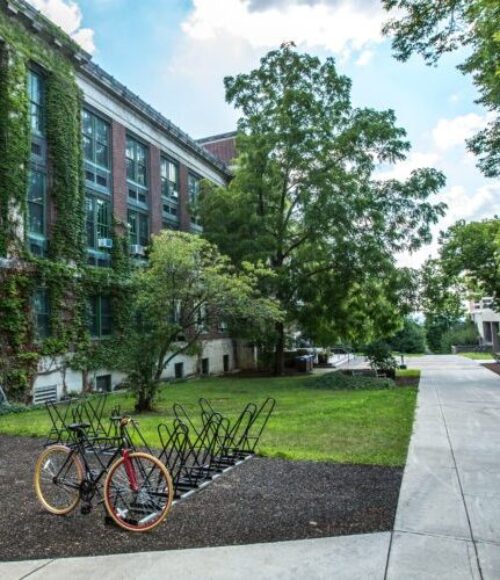Summer Sessions Are Integral to Student Success in Higher Education

Summer Sessions Are Integral to Student Success in Higher Education
Summer isn’t what it used to be for higher education institutions and their students.
Gone are the days when there was a clear divide between the academic year and summer. Today, colleges and universities everywhere increasingly embrace the concept of a holistic year, and summer sessions have become an essential component of both standard and alternative educational pathways.
This changing landscape presents significant opportunities for schools to increase revenue, grow enrollments, and boost persistence and graduation rates. Yet units are often left “betwixt and between” to establish and market summer programming—sometimes, without the total weight of support from their institution.
Amid the challenges and opportunities surrounding summer programming, it’s helpful to understand how summer programming started and where it’s heading.
A Brief History of Summer Programming
The history of summer programming at higher education institutions can be broken down into three distinct eras.
Opportunistic Era
In the late 20th century, schools’ summer programming efforts were primarily driven by the question, “What can we do with all these available facilities?” Standard offerings that arose during this era include:
- Camps. Camps ranging in focus from engineering to sports have always been a great way for colleges to build their brand, serve their community, and provide fun and academic opportunities for young people.
- First-year and bridge programs. Standard two-day pre-college orientations aren’t sufficient for all students. Bridge programs have historically been used to prepare vulnerable populations for success. Forward-thinking schools could benefit from applying these programs to entire incoming freshman classes.
- Study abroad programs. A long-time staple of colleges’ offerings, study abroad programs are excellent opportunities for students to have valuable global experiences.
Revenue Generating and Marketing Enhancement Era
By the early 2000s, schools began prioritizing programs that would generate revenue and provide students with a positive experience. Standard offerings that arose during this era include:
- Pre-college. As higher education enrollment rates continue to drop due to the impending demographic cliff, pre-college is key to maintaining enrollment. The objective is to get potential students on campus to “try before they buy” and, hopefully, establish an emotional connection with the school.
- College credit programs. College credit programs—the primary revenue source for many schools—could be leveraged more strategically to increase persistence and graduation rates. For example, students may benefit significantly from the opportunity to take full-credit classes during the summer. The catch is that they’ll need the chance to use their financial aid more flexibly as well.
- Intensive English programs. Similar to bridge programs, intensive English programs are great entry points for international students who want to pursue full degrees at American universities. The most successful programs cover not only intensive English but also teach content matter.
Fifth Quarter or Third Semester Era
In the past decade, higher education institutions have gradually shifted their perspectives to view the academic year more holistically. Standard offerings that arose during this latest era expanded beyond the summer to include:
- Winter sessions. Many schools have periods of up to six weeks between semesters, providing an excellent opportunity to offer 1-3 credit classes in intensive settings.
- Professional education. Colleges that offer classes year-round can appeal to adult professionals pursuing ongoing education who may have more time during the slow summer months due to the seasonality of their businesses.
The Value of Summer Session Programming
Revenue generation is undeniably one of the major benefits of summer programming. Providing on-campus learning opportunities year-round is a smart way for schools to put their infrastructure to use during “down times,” and online programming can extend a school’s reach when residential students aren’t physically on campus.
“The revenue associated with summer sessions was once an afterthought, but now it’s clear that these programs can be highly successful revenue generators,” says Lowell K. Davis, Vice Chancellor, Student Affairs at University of North Carolina Wilmington.
But perhaps the most compelling case for summer session programming is that it contributes to student success. Students who take summer classes stay closer to the school, are less likely to stop out, and are more likely to graduate within six years. (It’s worth noting, of course, that these benefits are also instrumental to an institution’s ability to maintain financial stability.)
Schools like Worcester Polytechnic Institute are seeing excellent results firsthand. “We’ve had an ongoing program for our first-year students where we look at them after the fall semester and identify students who are vulnerable. We then offer them the opportunity not to overload in the spring, offering them a free class in the summer instead,” says Debra Boucher, Assistant Dean of Undergraduate Studies at Worcester Polytechnic Institute.
However, despite anecdotal success stories, data quantifying the contribution of summer programming to student success and the overall impact on universities is sparse. To address this issue, MindMax and the North American Association of Summer Sessions (NAASS) are offering a $10,000 research grant to study summer sessions. We hope that the data from the study will help to further convey the true potential of summer programming.
The Future of Summer Session Programming: What’s Coming Next
Looking forward, there is a real opportunity for higher education summer sessions and related initiatives to continue evolving in an extremely positive direction. Here’s what we anticipate will come next:
- Establishing summer programming as a standard part of the undergraduate experience, including building it into advising plans
- Making first-year and bridge programs available online for everyone who wants to participate
- Continuing to transition to a “full-year mentality,” particularly when developing programming for adult undergraduates
- Significantly increasing dual enrollment opportunities and developing programs that map to other schools’ prior learning assessments (PLA).
- Strengthening reenrollment efforts
- Repurposing first-year programs and applying them to adult learners who want to go back to school
- Increasing corporate involvement on campus as remote companies in the community look for facilities to host their events
- Partnering with community colleges, nonprofits, and government entities in the regional community to create space for difficult conversations
The Keys to Successful Summer Session Initiatives
Summer programming is here to stay, and schools must step up their efforts. Those with summer sessions already in place will need to do more to optimize their current offerings, and those that don’t yet have summer programs will need to get them off the ground as soon as possible.
Effective higher education marketing and enrollment strategies will be key to driving the success of summer programs. The supply of programs will only increase, leading to higher competition amid a steadily declining stream of incoming students. Savvy schools will ask, “What are we going to do to ensure that our programs stand out?”
MindMax is here to help you answer that question. We’ve worked with many schools over the years to make their summer programs successful and can provide the full spectrum of marketing and enrollment support you need.
Here are some strategies MindMax has implemented with great success:
1. Leveraging personalized outreach
Today’s consumers expect highly personalized experiences from brands—and students are no different. Consider reaching out to lapsed enrollees via emails and phone calls tailored to each individual.
Real results: When MindMax implemented a personalized summer enrollment marketing strategy for a private liberal arts university, the summer enrollment outreach response increased from 17% to 43%, earning the university an additional $800,000.
2. Connecting with new audiences
Reaching the right audience is key to any marketing initiative’s effectiveness. We’ve seen success in including these audiences in summer sessions marketing outreach:
- Admitted freshmen who chose not to attend your school
- Students who were denied admission in the previous 4-5 years
- Private school classrooms
3. Optimizing existing digital campaigns
Schools that approach digital marketing campaigns with a “set it and forget it” mentality seldom get the results they want. Analyze your existing summer sessions marketing campaigns to identify areas for improvement.
Real results: When MindMax evaluated and optimized email, pay-per-click (PPC), and retargeting campaigns for an Ivy League university, visitors to the summer programs website increased by 16%.
4. Reducing friction
Too much friction can render any marketing campaign ineffective. Think about it: every link a prospective student clicks, every field they fill out, and every decision or choice they have to make is a potential friction point. The more friction there is, the less likely a student will make it to enrollment. Identify areas where you can reduce friction to enable a more seamless experience.
Real results: When MindMax discovered that a New England Ivy League institution’s prospective students were abandoning their online shopping carts at the moment of purchase, further analysis revealed that the drop-offs occurred the moment they realized they needed to pay a $50 application fee. We encouraged the university to adopt an innovative pricing strategy that would allow summer program enrollees to submit their applications fee-free, contributing to an 18.4% increase in overall program enrollments.
Get Ahead of Promoting Summer Session Offerings
Schools are often surprised at how early they should begin marketing summer sessions offerings to students.
When marketing to current students, begin actively promoting summer programming in January and February.
When marketing to first-year or pre-college learners, start as early as November, making it a priority to connect with students and their families. We advise schools to start messaging this audience before Thanksgiving break since it’s likely that conversations about students’ futures may occur during that time.
Contact us today to learn more about our higher education marketing and strategic enrollment management services!
Related Ideas
The Gig Economy is Here to Stay—What Does That Mean for Higher Ed?

